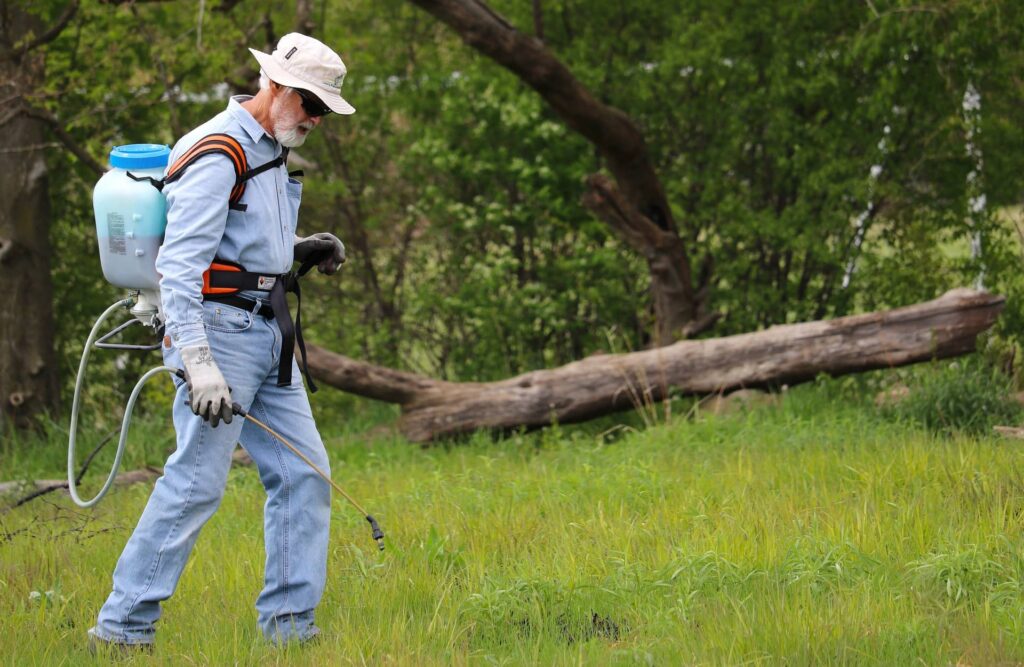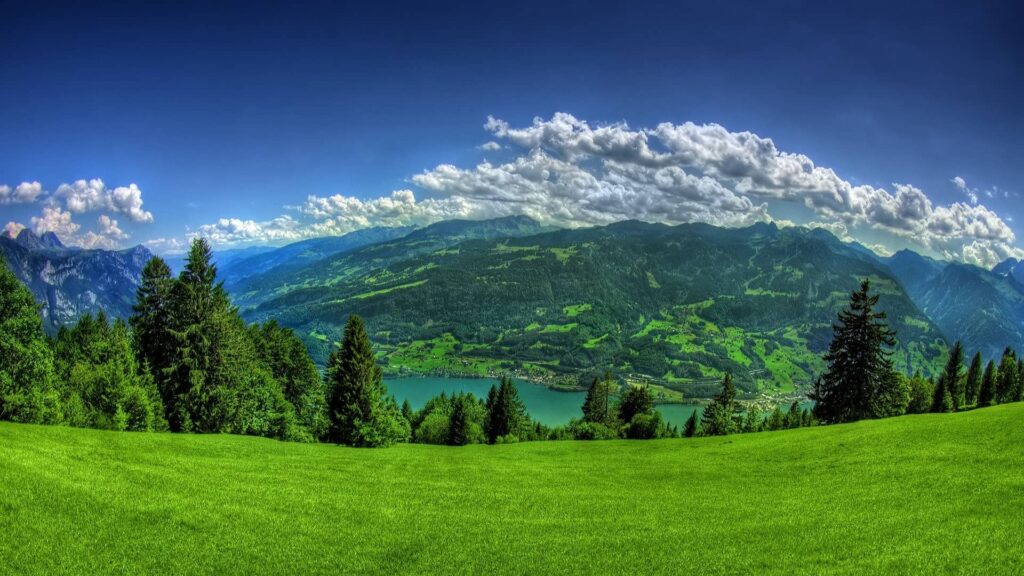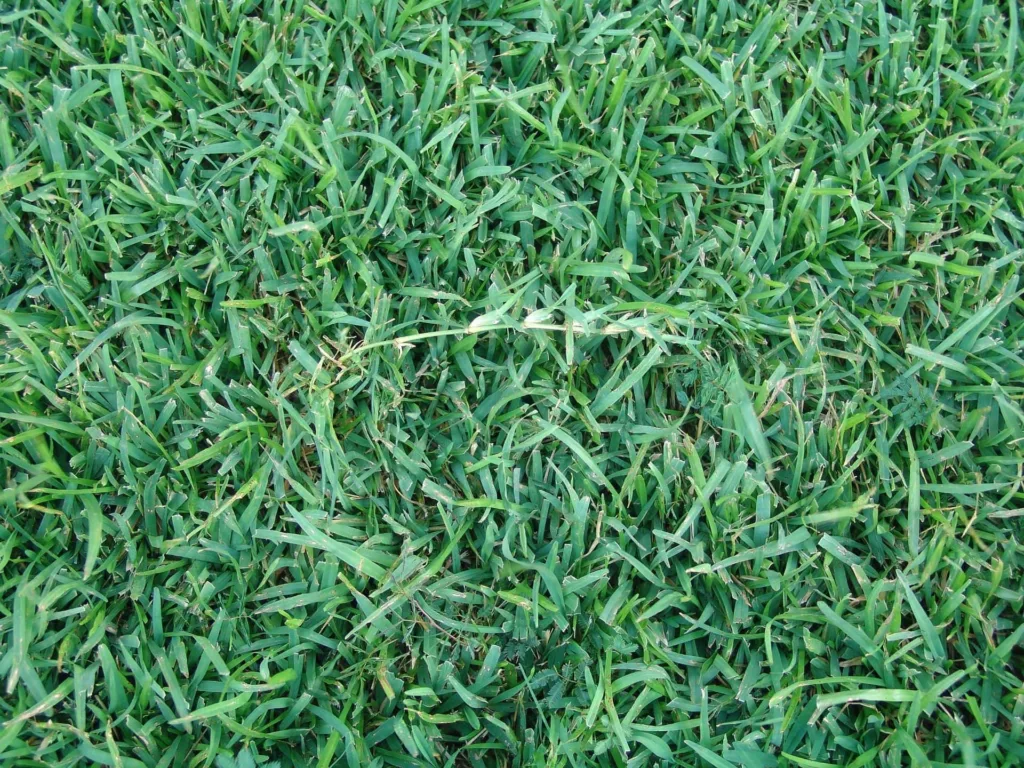Are you tired of looking at worn-out patches in your lawn where people constantly walk? You’re not alone. Many homeowners and property managers struggle with maintaining grass in high traffic areas. But don’t worry – with the right knowledge and grass types, you can have a beautiful, durable lawn that stands up to heavy use. In this comprehensive guide, we’ll explore the best grass types for high traffic areas and how to keep them thriving.
Understanding High Traffic Areas and Their Impact on Lawns
Before we dive into specific grass types, let’s define what we mean by “high traffic areas.” These are spots in your lawn that see frequent foot traffic, such as:
- Paths between buildings
- Areas around playgrounds
- Sports fields
- Pet runs
- Backyard gathering spaces
High traffic takes a toll on grass. It compacts the soil, making it harder for roots to grow and access nutrients. It also wears away the grass blades, leaving bare spots that are prone to erosion and weed invasion. That’s why choosing the right grass types for high traffic areas is crucial.
Top Grass Types That Thrive in High Traffic Areas
Not all grasses are created equal when it comes to withstanding heavy use. Let’s look at some of the best performers in both cool-season and warm-season categories.
Cool-Season Grasses for Heavy Foot Traffic
- Kentucky Bluegrass: The classic choice for lawns in cooler climates, Kentucky Bluegrass has a deep green color and forms a dense turf. It’s known for its ability to self-repair through underground rhizomes.
- Perennial Ryegrass: This grass establishes quickly, making it ideal for overseeding worn areas. It’s often mixed with Kentucky Bluegrass for a durable lawn.
- Tall Fescue: With deep roots and coarse blades, Tall Fescue is tough and adaptable. It tolerates both heat and cold, making it a versatile choice for transition zones.
Warm-Season Grasses That Can Take a Beating
- Bermuda Grass: Often called “the athlete’s turf,” Bermuda grass is incredibly resilient and recovers quickly from damage. It thrives in full sun and hot climates.
- Zoysia Grass: While slow to establish, Zoysia forms a dense, carpet-like turf that stands up well to traffic. It has good shade tolerance for a warm-season grass.
- St. Augustine: This grass performs well in shaded high traffic areas in warm regions. It forms a thick turf that can crowd out weeds.
Comparing Durability: How These Grasses Stack Up
| Grass Type | Traffic Tolerance | Recovery Speed | Climate |
|---|---|---|---|
| Kentucky Bluegrass | High | Moderate | Cool |
| Perennial Ryegrass | Very High | Fast | Cool |
| Tall Fescue | High | Slow | Cool/Transition |
| Bermuda Grass | Very High | Very Fast | Warm |
| Zoysia Grass | High | Moderate | Warm |
| St. Augustine | Moderate | Moderate | Warm |
Factors to Consider When Choosing Grass for High Traffic Zones

Selecting the right grass types for high traffic areas isn’t just about durability. You need to consider several factors to ensure your chosen grass will thrive in your specific conditions:
- Climate and regional adaptability: Choose grasses that are well-suited to your local climate. A grass that thrives in Florida won’t necessarily do well in Michigan.
- Soil type and quality: Some grasses prefer sandy soils, while others do better in clay. Test your soil and choose accordingly.
- Sunlight exposure: Most high-traffic grasses prefer full sun, but if you have shaded areas, you’ll need to select shade-tolerant varieties.
- Maintenance requirements: Consider how much time and resources you can dedicate to lawn care. Some grasses require more frequent mowing or fertilization.
- Recovery speed after damage: In high traffic areas, you want a grass that can bounce back quickly from wear and tear.
Blending Grass Types: A Smart Strategy for High Traffic Areas
One effective approach is to blend different grass types. For example, mixing Kentucky Bluegrass with Perennial Ryegrass can give you a lawn that’s both durable and quick to recover. The Ryegrass establishes quickly, providing immediate coverage, while the Bluegrass develops its deep root system for long-term resilience.
Best Practices for Establishing Grass in Busy Areas
Once you’ve chosen your grass types for high traffic areas, proper establishment is key to success. Here’s how to get your new lawn off to a great start:
- Soil preparation: Start with a soil test and amend as needed. Loosen compacted soil to a depth of at least 6 inches.
- Seeding vs. sodding:
- Seeding is less expensive but takes longer to establish.
- Sodding provides instant results but costs more.
- Watering strategies: Keep the soil consistently moist but not waterlogged during germination. Once established, water deeply and less frequently to encourage deep root growth.
- Traffic management: Rope off newly seeded or sodded areas to allow the grass to establish without disturbance.
Innovative Solutions: Reinforced Grass Systems for Extreme Traffic
For areas with extremely heavy traffic, consider reinforced grass systems. These combine natural grass with synthetic materials to create an extra-durable surface. Options include:
- Plastic mesh embedded in the soil
- Honeycomb-shaped cells filled with soil and grass
- Hybrid systems with synthetic fibers mixed with natural grass
These systems can withstand much heavier use than traditional lawns, making them ideal for event spaces or heavily used sports fields.
Maintenance Tips to Keep Your High Traffic Grass Thriving

Proper maintenance is crucial for grass types in high traffic areas. Here are some key practices:
- Mowing: Keep grass at the higher end of its recommended mowing height. This promotes deeper roots and more resilient turf.
- Fertilization: Use a balanced fertilizer and apply it according to your grass type’s needs. Be careful not to over-fertilize, which can weaken the grass.
- Aeration: Aerate compacted areas annually to improve water and nutrient penetration.
- Overseeding: Regularly overseed worn areas to maintain thick coverage.
- Irrigation: Water deeply and infrequently to encourage deep root growth.
Seasonal Care for High Traffic Grass Types
Adjust your care routine with the seasons:
- Spring: Apply pre-emergent weed control and fertilize lightly.
- Summer: Raise mowing height and water deeply during dry spells.
- Fall: Overseed and apply winterizer fertilizer.
- Winter: Minimize traffic on dormant warm-season grasses.
Common Problems and Solutions for Grass in Busy Areas
Even with the best grass types for high traffic areas, you may encounter some issues:
- Compaction: Aerate regularly and consider topdressing with compost.
- Bare spots: Overseed promptly and protect the area while grass establishes.
- Weeds: Maintain thick, healthy turf to crowd out weeds. Use selective herbicides as needed.
When to Consider Alternatives to Grass in High Traffic Spots
Sometimes, even the toughest grass can’t stand up to extreme traffic. In these cases, consider alternatives like:
- Permeable pavers with grass in between
- Artificial turf
- Mulched pathways
- Stepping stones
Disease Resistance of Grass Types for High Traffic Areas
When selecting grass types for high-traffic areas, disease resistance is a crucial factor often overlooked. Stressed grass in busy spots is more susceptible to diseases, which can quickly turn a lush lawn into a patchy mess. Let’s explore how our top high-traffic grass types stack up against common turf diseases.
Cool-Season Grasses and Their Disease Fighters
- Kentucky Bluegrass:
- Moderately resistant to leaf spot and dollar spot
- Susceptible to summer patch and fusarium
- Improved cultivars offer better resistance
- Perennial Ryegrass:
- Good resistance to gray leaf spot
- Vulnerable to brown patch and red thread
- Quick recovery helps it outgrow some diseases
- Tall Fescue:
- Excellent resistance to brown patch
- Tolerant of fusarium and red thread
- Some susceptibility to dollar spot
Warm-Season Warriors Against Disease
- Bermuda Grass:
- Highly resistant to most diseases
- Can be affected by spring dead spot in cooler zones
- Quick growth helps it recover from disease damage
- Zoysia Grass:
- Resistant to many common lawn diseases
- Susceptible to large patch in cool, wet conditions
- Slow growth can make recovery from disease challenging
- St. Augustine:
- Good resistance to dollar spot
- Vulnerable to brown patch and gray leaf spot
- Thick growth helps crowd out fungal invaders
Boosting Disease Resistance in High Traffic Grass
To enhance the natural disease resistance of your chosen grass types for high traffic areas, consider these strategies:
- Proper mowing height: Keep grass at the higher end of its recommended range to increase stress tolerance.
- Balanced nutrition: Avoid over-fertilizing, which can promote disease-prone lush growth.
- Improve air circulation: Prune nearby trees and shrubs to reduce humidity in the turf canopy.
- Water management: Water deeply but infrequently to prevent prolonged leaf wetness.
Disease Resistance Comparison Table
| Grass Type | Overall Disease Resistance | Notable Strengths | Potential Weaknesses |
|---|---|---|---|
| Kentucky Bluegrass | Moderate | Leaf spot resistant | Summer patch susceptible |
| Perennial Ryegrass | Good | Gray leaf spot resistant | Brown patch vulnerable |
| Tall Fescue | Very Good | Brown patch resistant | Some dollar spot issues |
| Bermuda Grass | Excellent | Broad spectrum resistance | Spring dead spot in cool areas |
| Zoysia Grass | Good | Few major disease issues | Large patch in cool, wet conditions |
| St. Augustine | Moderate | Dollar spot resistant | Brown patch susceptible |
Remember, even the most disease-resistant grass types for high traffic areas can succumb to pathogens under extreme stress or poor management. Regular monitoring, proper care, and swift action at the first sign of disease are key to maintaining a healthy, resilient lawn in busy areas.
By choosing grass types with strong disease resistance and following good cultural practices, you can create a lawn that not only withstands the wear and tear of heavy use but also fends off potential disease outbreaks. This combination of durability and health makes these grasses ideal choices for high traffic areas, ensuring your lawn stays green and vibrant despite constant activity.
Environmental Benefits of Resilient Grass in Urban Spaces

Choosing the right grass types for high traffic areas doesn’t just benefit your lawn – it’s good for the environment too. Healthy, resilient grass:
- Sequesters carbon and improves air quality
- Reduces urban heat island effect
- Prevents soil erosion
- Filters stormwater runoff
FAQs About Grass Types for High Traffic Areas
Q: How long does it take for high traffic grass to establish? A: It depends on the grass type and method. Seed can take 1-3 months, while sod provides instant coverage but needs about 2 weeks to root.
Q: Can I overseed my existing lawn with a more durable grass type? A: Yes, but choose a compatible grass type. For example, you can overseed a Kentucky Bluegrass lawn with Perennial Ryegrass for added durability.
Q: What’s the best grass for dog runs and pet areas? A: Bermuda grass and Tall Fescue are both excellent choices for pet areas due to their durability and quick recovery.
Conclusion: Choosing the Right Grass for Your High Traffic Needs
Selecting the best grass types for high traffic areas is a balance of durability, climate suitability, and maintenance requirements. Whether you opt for the quick recovery of Bermuda grass in warm climates or the lush resilience of a Kentucky Bluegrass blend in cooler regions, the key is proper establishment and consistent care.
Remember, a beautiful, functional lawn in high traffic areas is possible with the right grass and care. By following the guidelines in this article, you can transform your busy outdoor spaces into lush, durable, and inviting areas that stand up to whatever life throws at them. So go ahead – plan that backyard party, let the kids play, and enjoy your resilient, high-traffic lawn!


